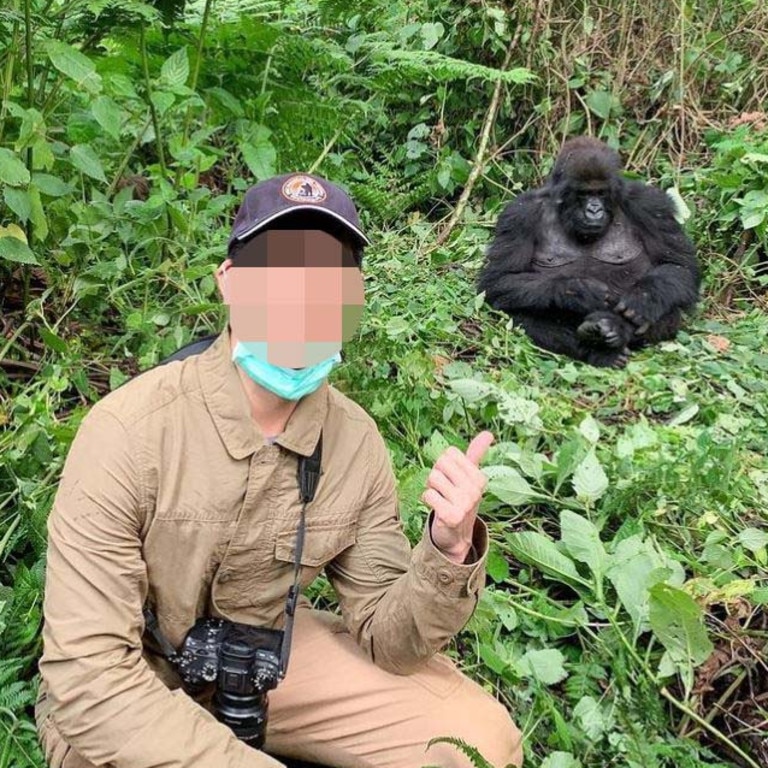Tourists posing for selfies with wild gorillas risk spreading COVID-19, says study
Wild gorillas are being put at risk of catching coronavirus by hundreds of tourists taking selfies, scientists have warned.
Wildlife tourists taking selfies with mountain gorillas have put the animals at huge risk of developing coronavirus and other diseases, research says.
Scientists from Oxford Brookes University in England studied hundreds of Instagram posts from travellers getting up close with the endangered gorillas. They found numerous instances of tourists getting close enough to the primates to spread diseases and viruses, a press release said on Tuesday.
“The risk of disease transmission between visitors and gorillas is very concerning,” Gaspard Van Hamme, the study’s lead author said. He began working on the study during his university masters program.
“It is vital that we strengthen and enforce tour regulations to ensure gorilla trekking practices do not further threaten these already imperilled great apes.”
For the study, the researchers looked at 858 photos of tourists with gorillas posted between 2013 and 2019, using the hashtags #gorillatrekking and #gorillatracking.
While the research predated the coronavirus pandemic, more recent Instagram posts of people without masks or with masks not worn properly taking selfies with the animals can easily been found.
It has been policy since before the pandemic that wildlife tourists going to see the primates should keep a distance of at least 7m away from them and should wear face masks to limit the possibility of exposing the animals to viruses and other illnesses.
RELATED: Outrageous monkey video slammed


RELATED: Call for night-time cat curfew
From the images studied, some 86 per cent of people were within 4m of the gorillas, and 25 people were touching the endangered primates.
The researchers say these tourists were certainly close enough to transmit disease.
“We found that face masks were rarely worn by tourists visiting gorillas and that brings potential for disease transmission between people and the gorillas they visit,” Magdalena Svensson, who lectures in biological anthropology at the university, said in a statement.
She told CNN people who visited the wild gorillas had been asked to wear face masks as part of a “Best Practice Guidelines for Great Ape Tourism”, which was developed under the International Union for the Conservation of Nature. The face mask guide around the endangered primates predates the pandemic.
RELATED: Tiny lizard is big where it counts

“They’re so genetically close to us they can get most of the things we can get,” she said.
She added as well as being at risk of catching COVID-19, gorillas are also at risk of contracting other deadly illnesses such as influenza, ebola and even the common cold through humans.
She said all tourists are told to keep at a minimum distance of 7m from the gorillas. She said the analysis shows the distance has been falling over time.
There is currently no evidence to suggest wild gorillas have contracted COVID-19. However, in January, eight western lowland gorillas living in the San Diego Zoo contracted the virus.
Mountain gorillas, a subspecies of the eastern gorilla, are endangered.
The remaining wild population lives in mountainous region of extinct volcanoes, bordering the Democratic Republic of the Congo, Rwanda and Uganda.
The wild population is estimated to be just over 1000, according to the World Wildlife Foundation.




